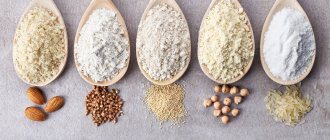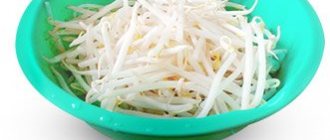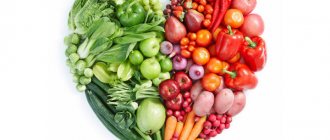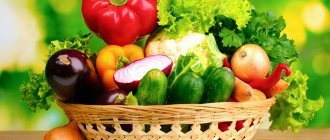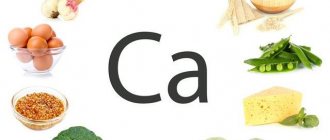You can buy glucose right now in our online store
We remind you that we have a course on unique dish decorating techniques. The course includes a significant amount of molecular gastronomy techniques. The course is suitable for professionals and amateurs; you can familiarize yourself with it by clicking on the link now. We will also leave a link at the end of the article so that you can check out the course after reading it.
Glucose is the main supplier of carbohydrates to the human body and an irreplaceable source of energy. Due to its low calorie content compared to fats and rapid digestibility, the substance instantly satisfies hunger. The largest amount of sugar is found in fruits and berries. For example, there is a lot of it in grapes. Thanks to this product, the substance received a second name - grape sugar. In this article we will tell you which foods contain glucose and what is the optimal rate of consumption of this carbohydrate.
Useful properties of glucose
One of the substances synthesized by the body is modified sugar, obtained from the breakdown of food. Suppliers of glucose include fats, proteins and carbohydrates. Sugar formed during metabolism enters the blood and provides the body with energy.
Glucose stimulates the functioning of the heart and blood vessels, supplies nutrition to brain cells, reduces hunger, reduces stress, and has a beneficial effect on the nervous system. Thanks to these healing properties, glucose is used not only in food, but also in the manufacture of medicines. The substance is effective against diseases that lead to the production of toxins: from ARVI to poisoning.
The effect of glucose on the body
Dextrose performs a number of useful functions for the benefit of the body:
- generation of energy, which is needed for stable functioning of tissues and organs;
- strengthening properties. The main role of glucose is in restoring the body after physical exercise;
- Dextrose stimulates the functioning of the liver, which is responsible for getting rid of toxins;
- ordinary improvement in emotional state. The sugar content in glucose has a good effect on the nervous system and provokes the production of endorphins;
- supporting the functioning of the vascular system;
- quenches the feeling of hunger;
- activates brain function.
We suggest you read: What antipyretic for diabetes mellitus can NSAIDs for diabetics

Based on a number of beneficial properties of glucose, maintaining acceptable levels in the body is extremely necessary. Basically, the hormone insulin works together with the liver on this task.
The hormone insulin, which is generated by the pancreas in the required volumes, is responsible for normalizing glucose levels in the body. It promotes accelerated and high-quality absorption of glucose into the blood. In situations where there is not enough insulin, it is obtained externally through medications.
Products that contain glucose have different amounts. Thus, calculating its amount in the blood is not entirely easy. This is also due to a number of reasons:
- Stress.
- High physical activity.
- Hard mental work.
Depending on these factors, glucose levels can fluctuate greatly. The liver stores dextrose in advance to always maintain the body in normal condition. All excess amounts are put aside in a cache, which is used at the right moments. Therefore, normal liver function is extremely important for your body.
As already mentioned, glucose gives us energy, supports all vital processes in the body, in other words, it is fuel for humans. Glucose is present in the human body in the blood, absorbed through the walls of blood vessels.
As soon as glucose enters the body, it causes an increase in blood sugar, which in turn activates the pancreas, which produces insulin. A person needs insulin to remove excess sugar from the blood, which is released from glucose and has no benefit.
In a healthy person, the processes of glucose entering the blood and its utilization through insulin occur day after day in a normal manner. But more and more people are becoming diabetic due to disruption of this glucose cycle in the body.
To identify problems, you need to donate blood for sugar; if your levels are slightly higher than normal, you will have to limit yourself to glucose in order to prevent the development of the disease. If the results of the analysis are not reassuring, you will have to radically change your lifestyle, taking into account the amount of carbohydrates consumed and supplying insulin to the body using tablets or injections.
Our body produces glucose.
Glucose is a form of sugar that is produced in our body after eating. Glucose is formed due to the intake of carbohydrates, proteins and fats. Then it enters the blood. Our blood absorbs glucose and creates the energy needed to move and carry out chemical processes in the body. Muscle tissue, organs and cells of the body use this energy.
Glucose takes an active part in many processes of the human body:
- participates in important metabolic processes;
- considered the main source of energy;
- stimulates the functioning of the cardiovascular system;
- used for medicinal purposes to treat many diseases: liver pathologies, diseases of the central nervous system, various infections, intoxication of the body and other diseases.
Glucose is contained in many antitussive drugs and blood substitutes;
- provides nutrition to brain cells;
- eliminates the feeling of hunger;
- relieves stress, normalizes the functioning of the nervous system.
In addition to the above benefits of glucose in the human body, it improves mental and physical performance, normalizes the functioning of internal organs and improves overall health.
For the brain, glucose is the only “fuel”.
For successful functioning, brain neurons require a constant supply of at least 125-150 grams of glucose per day.
The body receives the energy it needs as long as blood sugar is at a normal level. Too high or too low a level causes deviations from the normal functioning of our body. This is why it is important for us to know which foods are sources of glucose.
Glucose enters our body with foods containing carbohydrates.
A special hormonal mechanism maintains the required level of glucose in the blood. Often, after eating, the blood sugar level rises slightly. This causes the pancreas to release a hormone called insulin.
The causes of hypoglycemia (lack of glucose) can be: prolonged fasting, malnutrition, unhealthy diet, various diseases, and so on.
Signs of glucose deficiency may appear throughout the day.
Often, a person suffering from them may not even be aware of the disorder. For example, feeling tired and exhausted between 11 am and 3 pm is the first symptom of insufficient sugar.
So, the first symptoms of glucose deficiency:
- weakness, feeling tired,
- shiver,
- sweating,
- headache,
- hunger,
- drowsiness,
- irritation,
- anger,
- confused thoughts,
- vision problems,
- double vision,
- feeling of awkwardness
- frequent heartbeat.
Of the products containing glucose, it is necessary to note grapes, cherries, raspberries, strawberries, plums, watermelon, bananas, pumpkin, white cabbage, carrots, potatoes, grains and cereals, honey.
Our body produces glucose. Glucose is a form of sugar that is produced in our body after eating. Glucose is formed due to the intake of carbohydrates, proteins and fats. Then it enters the blood.
- used for medicinal purposes to treat many diseases: liver pathologies, diseases of the central nervous system, various infections, intoxication of the body and other diseases. Glucose is contained in many antitussive drugs and blood substitutes;
For the brain, glucose is the only “fuel”. For successful functioning, brain neurons require a constant supply of at least 125-150 grams of glucose per day.
Glucose enters our body with foods containing carbohydrates. A special hormonal mechanism maintains the required level of glucose in the blood. Often, after eating, the blood sugar level rises slightly.
This causes the pancreas to release a hormone called insulin. This hormone promotes the absorption of glucose by the body's cells and lowers its concentration in the blood to the required levels. In addition, insulin forms a certain supply of glucose in our body, contained in the form of glycogen in the liver.
Glucose is absorbed very quickly in our digestive system. It is a monomer from which some polysaccharides are formed, for example glycogen, cellulose and starch. As a result of the oxidation of glucose in the body, energy is released, which is necessary for the occurrence of various life processes.
If glucose enters the body in excess, it is quickly transformed into energy reserves. Glucose is converted into glycogen, which is deposited in various places and tissues of the body as a reserve source of energy.
Our muscles cannot do without glycogen. After all, it is he who, when disintegrating, releases the energy necessary for the work and restoration of cells. In muscles, glycogen is constantly consumed, but its reserves do not decrease.
We suggest you read: What does increased glucose in the blood and urine mean?
Signs of glucose deficiency may appear throughout the day. Often, a person suffering from them may not even be aware of the disorder. For example, feeling tired and exhausted between 11 am and 3 pm is the first symptom of insufficient sugar.
How much glucose is in fruits?
According to the glucose content in fruits, the latter are divided into groups (with low, medium and high percentage of sugars).
A small percentage of sugar (up to 3.99 g per 100 g of product) has:
- avocado (0.66 g);
- lime (1.69 g);
- lemon (2.5 g);
- sea buckthorn (3.2 g).
A small percentage of sugar (up to 7.99 g per 100 g of product) has:
- cranberry (4.04 g);
- cherry plum (4.5 g);
- strawberry (4.66 g);
- blueberries (4.8 g);
- blackberries (4.9 g);
- rowan (5.5 g);
- raspberries (5.7 g);
- watermelon (6.2 g);
- strawberries (6.2 g);
- grapefruit (6.8 g);
- currants (7.3 g);
- nectarine (7.8 g).
The average sugar content (up to 11.9 g per 100 g of product) is:
- lingonberries (8 g);
- melon (8.1 g);
- gooseberries (8.1 g);
- peach (8.3 g);
- quince (8.9 g);
- kiwi (8.9 g);
- apricot (9.2 g);
- pineapple (9.2 g);
- orange (9.3 g);
- pear (9.8 g);
- plum (9.9 g);
- tangerine (10.5 g);
- apple (10.3 g);
- cherry (11.5 g).
High sugar content (from 12 g per 100 g of product) have:
- banana (12.2);
- persimmon (12.5 g);
- mango (14.8 g);
- figs (16 g);
- grapes (16.2);
- pomegranate (16.5 g).
Where is glucose found in foods?
High concentrations of this substance are present in sweets and flour products that contain starch. In addition to confectionery products, potatoes and rice, this category includes store-bought sausages and semi-finished products that contain gluten. Those who do not know where glucose is found should remember that it is found in cereals, including buckwheat. The substance is also present in fruits and vegetables. There is especially a lot of glucose in grapes, cherries, raspberries, bananas, plums, watermelons and strawberries. Glucose is found in considerable quantities in kvass, wine and beer. Its sufficient concentration is found in pumpkin, white cabbage, carrots, honey, milk, kefir and cream.

In what cases does the need for glucose increase and decrease?
Glucose is an important nutritional element, the consumption rates of which are regulated by the type of human activity and load. The need for the substance increases during physical exercise. A large amount of glucose is spent on mental operations.

Less sugar is required for obese people prone to diabetes, as well as those who lead a sedentary lifestyle. The intake of fats will help compensate for the lack of glucose, which in this case will become a source of energy, and will not begin to be deposited as excess in the tissues.
Does the body really need glucose?
The indispensability of glucose for the body lies in the fact that it performs a number of useful functions:
- obtaining energy that is used to ensure the functioning of tissues and organs;
- increased immunity - after physical exhaustion, glucose helps the body recover;
- disinfecting property - without glucose the liver does not work well, but it is this organ that neutralizes toxins;
- normalization of the mental state - when the blood sugar level rises after consuming glucose, the nervous system calms down and endorphin is produced (sweet tooth addiction syndrome);
- stimulating the performance of the circulatory system;
- rapid satiety, when glucose dulls the feeling of hunger;
- Glucose is essential for normal brain function.
Daily norm and digestibility of glucose
Whatever glucose contains (be it fruits or sweets), once it enters the body, it is quickly broken down into water, carbon dioxide and energy. The amount of substance consumed depends on body weight. A person weighing 70 kg can consume up to 185 g of glucose daily, while:
- 120 g - goes to nourish the brain;
- 35 g - consumed by striated muscles;
- 30 g - enters the blood.
Individual consumption rates for the substance are calculated using the formula: 2.6 g x body weight.
From a lack of glucose in the blood, muscle weakness and apathy, hypoglycemia with loss of consciousness, and malfunction of all organs and systems develop. When you consume excess glucose, your blood sugar levels rise. When this indicator increases above 5.5, there is a risk of developing diabetes.
Foods that slowly increase levels of this substance
Having figured out where glucose is contained, it is necessary to mention that there are a number of components that contribute to long-term saturation of the human body. This category includes eggs, offal, lean meats, boiled or baked fish, milk and its derivatives. All this is recommended to be consumed together with non-starchy vegetables, which include cucumbers, tomatoes and cabbage. A combination of these products with boiled beets and carrots is also allowed.
To enhance the effect and prevent sharp fluctuations in blood sugar levels, it is advisable to reduce the amount of fat. You can consume no more than two tablespoons of vegetable oil per day. It is added to salads. As for animal fats, experts recommend limiting yourself to a teaspoon of unsalted butter per day.

In what cases and in what dosage is “medical” glucose prescribed?
Indications for use:
- hypoglycemia (low blood sugar concentration);
- lack of carbohydrate nutrition (with mental and physical overload);
- rehabilitation period after protracted illnesses, including infectious ones (as additional nutrition);
- decompensation of cardiac activity, intestinal infectious pathologies, liver diseases, hemorrhagic diathesis (in complex therapy);
- collapse (sudden drop in blood pressure);
- dehydration caused by vomiting, diarrhea, or surgery;
- intoxication or poisoning (including drugs, arsenic, acids, carbon monoxide, phosgene);
- to increase the size of the fetus during pregnancy (in case of suspected low weight).
In addition, “liquid” glucose is used to dilute drugs administered parenterally.
Isotonic glucose solution (5%) is administered in the following ways:
- subcutaneously (single serving - 300 - 500 milliliters);
- intravenous drip (maximum rate of administration - 400 milliliters per hour, daily dose for adults - 500 - 3000 milliliters, daily dose for children - 100 - 170 milliliters of solution per kilogram of child weight, for newborns this figure is reduced to 60);
- in the form of enemas (a single portion of the substance varies from 300 to 2000 milliliters, depending on the age and condition of the patient).
Hypertonic glucose concentrates (10%, 25% and 40%) are used for intravenous injections only. Moreover, no more than 20–50 milliliters of solution are administered at one time. However, in case of large blood losses or hypoglycemia, hypertonic fluid is used for infusion (100 - 300 milliliters per day).
Remember, the pharmacological properties of glucose are enhanced (1%), insulin, methylene blue (1%).
Glucose tablets are taken orally, 1 to 2 tablets per day (if necessary, the daily portion is increased to 10 tablets).
Contraindications to taking glucose:
- diabetes;
- pathologies accompanied by an increase in blood sugar concentration;
- individual glucose intolerance.
Side effects:
- overhydration (due to the introduction of volumetric portions of an isotonic solution);
- decreased appetite;
- necrosis of subcutaneous tissue (when a hypertonic solution gets under the skin);
- acute heart failure;
- inflammation of the veins, thrombosis (due to rapid administration of the solution);
- dysfunction of the insular apparatus.
Remember, too rapid administration of glucose is fraught with hyperglycemia, osmotic diuresis, hypervolemia, and hyperglucosuria.
Benefits of glucose for the body
LOSE TWO SIZES IN A MONTH!
The formula for losing weight is simple - burn more calories than you take into your body. But how can this be achieved in practice? Depleting yourself with complex and often dangerous diets is very risky. Spending a lot of money and time on the gym is not something everyone can afford. Kartunkova named the mistake of all those who LOSE WEIGHT: “Girls, just lose weight, here’s the recipe: before breakfast...”
Together with food, a certain amount of glucose enters our blood every day. Normally, its concentration in an adult should vary from 3.3 to 5.5 mmol/liter.
First, food is absorbed into the gastrointestinal tract, breaking down into proteins, fats and complex carbohydrates. The latter are divided into fructose and glucose. Once in the bloodstream, glucose is distributed throughout the body.
Dextrose is the most important source of energy for the cellular and tissue structures of the human body. When a person receives the component in the required quantities, his performance increases. From excess glucose, glycogen is formed - a reserve that supplies the body with carbohydrates in the event of unfavorable times.
The main functions of dextrose are:
- Participation in metabolism. Glucose, being an easily digestible substance, has 2 times fewer calories and interacts with oxygen much faster than other energy resources.
- Stimulation of the heart. It is used for its decompensation, as it has a beneficial effect on the cardiovascular system.
- Eliminate hunger. When the body lacks nutritional components, a feeling of hunger occurs. Moreover, an unbalanced diet entails disorganization of carbohydrate metabolism, which reduces the sensitivity of muscles to the glucose-lowering hormone - insulin. As a result, glucose output is impaired and hunger increases. When a monosaccharide is consumed, a person loses the feeling of hunger and feels good.
- Eliminate stress. Glucose is important for a person because when it enters the blood, it normalizes his mental state.
- Brain nutrition. This organ can only use carbohydrates as energy. Therefore, when it is deficient, a person becomes unfocused and weak.
- Use for medical purposes. Dextrose is usually used to treat hypoglycemia and poisoning. Glucose is also included in many antishock drugs and blood substitutes that are used for central nervous system pathologies, infections and intoxication.
The benefits of glucose for the body appear only with moderate consumption.
Therefore, the daily diet should not be replete with chocolate, sweets, sweet water, baked goods and flour products.
Which foods contain the most fructose?
You should also find out about foods containing large amounts of fructose and try to remember this list if you are watching your figure, are obese or have diabetes. For convenience, we have collected them in a table:
| Product | Fructose percentage |
| agave syrup | 56 |
| honey | 41 |
| Majul dates | 32 |
| cranberry | 27 |
| figs | 23 |
| Dates of the Deglet Nur variety | 20 |
| dried peach | 14 |
| dried apricots | 13 |
| ketchup | 9 |
| grape | 8 |
| balsamic vinegar | 7 |
| paprika | 7 |
Determination of glucose
The level of glucose in the blood is measured using a glucometer and this should be done on an “empty” stomach, since for another couple of hours after eating food, the glucose level will be shown twice as high as the actual one. Glucose is measured in units of mmol/l, that is, the volume of glucose per liter of blood. The normal level of glucose in human blood is:
- from 3.33 to 5.5 mmol/l in children (age up to 14 years);
- from 3.89 to 5.83 mmol/l in adults (age up to 60 years);
- 6.38 mmol/l in people over 60 years of age.
We should not forget that manufacturers of glucometers allow inaccuracy in readings within 20%. Therefore, if you get a reading that is not much lower or higher than normal, you should not immediately panic. Impaired absorption of glucose into the blood is obvious only if, when measured several times at a certain interval, the indicator remains abnormal. Otherwise there is nothing to worry about. The liver will worry about carbohydrate levels.
For the normal functioning of the body and the prevention of diseases that occur during carbohydrate starvation, an adult must consume foods containing glucose daily. The average required amount of glucose is 300 g. Within normal limits, this figure can vary from 250 g to 450 g.
The disadvantage of glucose is that it is not found in a “ready” form, but occurs when complex carbohydrates are broken down into components - simple carbohydrates, including glucose. The table below will tell you which foods contain glucose:
| Availability in 100 g | Daily dose for an adult |
| Sugar | |
| Bee Honey | |
| Marmalade | |
| Gingerbread | |
| Pasta | |
| Sweet straw | |
| Dates | |
| Pearl barley | |
| Dried apricots | |
| Raisin | |
| Apple jam | |
| Chocolate | |
| Rice | |
| Oatmeal | |
| Corn | |
| Buckwheat | |
| White bread | |
| Rye bread | |
| Ice cream | |
| Potato | |
| Apples | |
| Grape | |
| Beet | |
| Carrot | |
| Cherry | |
| Cherries | |
| Milk | |
| Gooseberry | |
| Pumpkin | |
| Legumes | |
| Cabbage | |
| Raspberries | |
| Tomatoes | |
| Cottage cheese | |
| Sour cream | |
| Plums | |
| Liver | |
| Strawberry | |
| Watermelon | |
| Oranges | |
| Apricots | |
| Tangerines | |
| Cheese | |
| Peaches | |
| Pear | |
| Black currant | |
| cucumbers | |
| Oil | |
| Eggs |
Based on the data indicated in the table, the permissible rate of consumption of a particular product has been established, but this does not mean that if you eat more apples or chocolate, you will immediately get some kind of disease. This is wrong. There are external factors that reduce glucose levels, as well as a thrifty liver. But it is still advisable to adhere to such a sugar diet.
